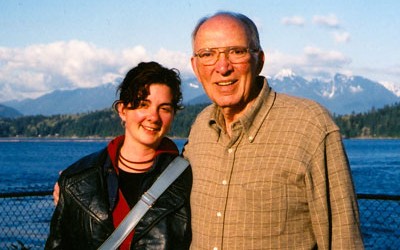Kathleen Mullen Turns Personal Film about Asbestos, Mesothelioma into ‘Breathtaking’ Experience
Asbestos Exposure & BansWritten by Tim Povtak • Edited By Walter Pacheco
Asbestos.com is the nation’s most trusted mesothelioma resource
The Mesothelioma Center at Asbestos.com has provided patients and their loved ones the most updated and reliable information on mesothelioma and asbestos exposure since 2006.
Our team of Patient Advocates includes a medical doctor, a registered nurse, health services administrators, veterans, VA-accredited Claims Agents, an oncology patient navigator and hospice care expert. Their combined expertise means we help any mesothelioma patient or loved one through every step of their cancer journey.
More than 30 contributors, including mesothelioma doctors, survivors, health care professionals and other experts, have peer-reviewed our website and written unique research-driven articles to ensure you get the highest-quality medical and health information.
About The Mesothelioma Center at Asbestos.com
- Assisting mesothelioma patients and their loved ones since 2006.
- Helps more than 50% of mesothelioma patients diagnosed annually in the U.S.
- A+ rating from the Better Business Bureau.
- 5-star reviewed mesothelioma and support organization.
Testimonials
My family has only the highest compliment for the assistance and support that we received from The Mesothelioma Center. This is a staff of compassionate and knowledgeable individuals who respect what your family is experiencing and who go the extra mile to make an unfortunate diagnosis less stressful. Information and assistance were provided by The Mesothelioma Center at no cost to our family.LashawnMesothelioma patient’s daughter
How to Cite Asbestos.com’s Article
APA
Povtak, T. (2020, October 16). Kathleen Mullen Turns Personal Film about Asbestos, Mesothelioma into ‘Breathtaking’ Experience. Asbestos.com. Retrieved April 24, 2024, from https://www.asbestos.com/news/2011/08/29/kathleen-mullen-turns-personal-film-about-asbestos-mesothelioma-into-breathtaking-experience/
MLA
Povtak, Tim. "Kathleen Mullen Turns Personal Film about Asbestos, Mesothelioma into ‘Breathtaking’ Experience." Asbestos.com, 16 Oct 2020, https://www.asbestos.com/news/2011/08/29/kathleen-mullen-turns-personal-film-about-asbestos-mesothelioma-into-breathtaking-experience/.
Chicago
Povtak, Tim. "Kathleen Mullen Turns Personal Film about Asbestos, Mesothelioma into ‘Breathtaking’ Experience." Asbestos.com. Last modified October 16, 2020. https://www.asbestos.com/news/2011/08/29/kathleen-mullen-turns-personal-film-about-asbestos-mesothelioma-into-breathtaking-experience/.

Kathleen Mullen started making a documentary as a personal tribute to her father, as a way to honor and remember his life.
She finished the film as an indictment of the industry that killed him — and a government that allowed it to happen.
The transformation — the bridge between the two — is what makes “Breathtaking,” so powerful.
Richard Mullen, her father, died in 2003 of, the cancer caused by an exposure to asbestos. He spent 40 years as a project engineer, often inspecting oil pipes where he unknowingly was inhaling asbestos fibers.
“I wanted to do something from a personal standpoint, something from the heart,” she told the Mesothelioma Center. “But the more research I did, the more I understood: this wasn’t a family issue, this was a global problem effecting people around the world. It really motivated me to tell the whole story.”

The 43-minute film is a love-hate interaction, filled with touching, father/daughter memories alongside stark, cold realities about the hurtful business of asbestos and the deadly path that it still takes.
The film can be seen for free Sept 26 at 6:30 p.m. EST through live streaming at asbestosdiseaseawareness.org.
Mullen Witnessed Asbestos Mining
“I’m proud of this film, very proud that it’s getting out there for people to see,” said Mullen, who is the director of programing at Planet in Focus, a Toronto-based annual film festival that focuses on environmental issues. “It was uncanny, really shocking in fact, at how many people we met during the filming, who had been impacted by this disease.”
During her work, Kathleen traveled to Arizona, where her father originally lived, to the family home in British Columbia, to Quebec, where asbestos is being mined today, and then to India, where asbestos is being sold and used extensively to help build low-income housing.
The film includes personal photographs and home movies that taken before her dad was diagnosed in 2001. It includes footage of his legal testimony against the industry before he died and frank, touching discussions with him and his wife as he battled the illness to the end.
With her camera, she toured both underground and open-pit asbestos mines, talking to people who worked there, listening to conflicting stories about the safety and the need of their jobs. She spoke with those it was killing and with those who were proud of its uses. Canadian governmental officials, who allow the mining of asbestos to continue, declined to be part of her film.
In India she met with people opposed to the importation of asbestos and those who buy it for manufacturing, despite its toxic history. She watched the harvest of asbestos and the end result of its use.
Abestos Lobby Sees Film
Previous screenings of the film have been met with enthusiastic support and sometimes energetic debate. During one screening in Toronto, there was a member of the asbestos lobby who came from Montreal just to be heard.
“It was exciting when he spoke. It really energized people,” she said. “It’s good to know how the other side feels, to know where it is coming from.”
It took Mullen five years to make the film, which was first shown almost a year ago. In it, she moved deftly from first-person experiences to third-person accounts of what she saw, moving from emotional to dispassionate through the film.
According to its latest statistics, the World Health Organization estimates that 90,000 people died annually from an asbestos-related illnesses. Yet the Canadian government still allows the mining and the export of asbestos, even when its use nationally is nearly non-existent.
The dangers of asbestos have been well-documented for more than 50 years. And its use in both the United States and Canada has dropped dramatically since the late 1970s, when regulations began. Many industrialized countries have banned its use in new products, but not every country has such a strict stance. It’s one reason that Mullen still feels the need to tell her father’s story. Not just for him, but for all those around the world who might suffer a similar fate.
“One of our driving forces, as we came to the end, was the desire to hold these companies accountable for what they did and are doing still,” she said. “I don’t know if we can make a difference, but I know we can try.”







